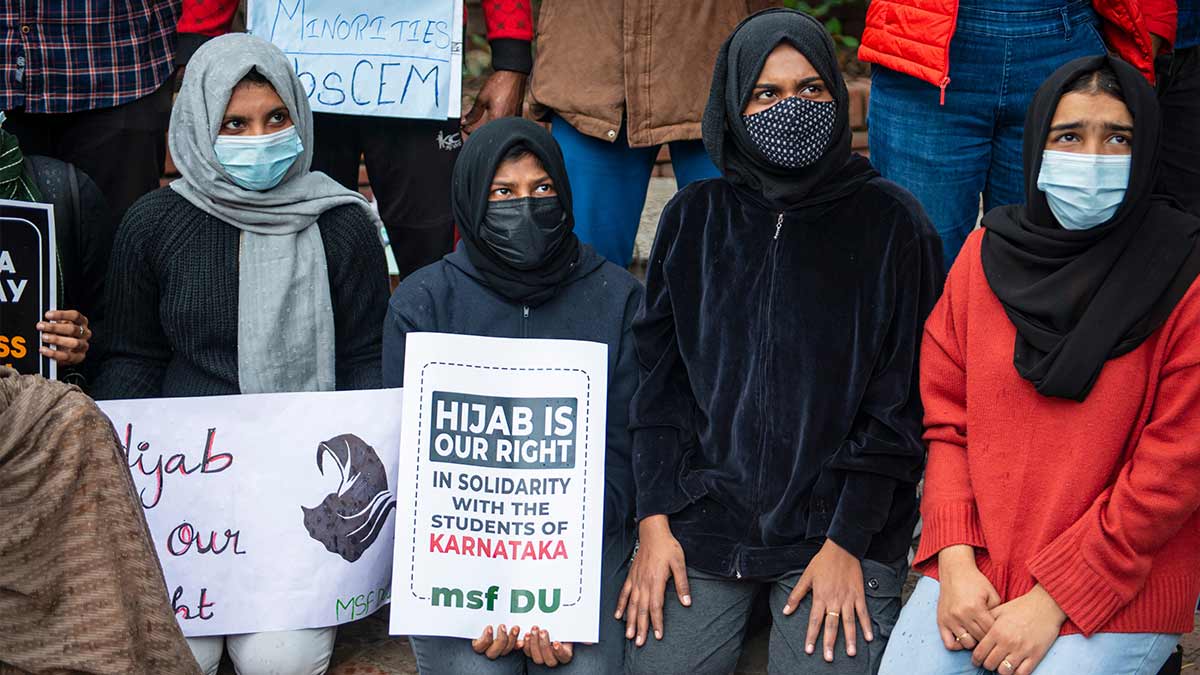
The Supreme Court Rules A Split Verdict In Karnataka Hijab Ban Case
The Supreme Court passed a split verdict today on the batch of appeals that challenged the ban on Muslim girls wearing Hijab in educational instituitions in Karnataka. The hearing of the top most court on the matter spanned over 10 days before the bench of Justices Hemant Gupta and Sudhanshu Dhulia came to a decision.
While Justice Hemant Gupta agreed to the Karnataka High Court order in March, which prohibited the wearing of hijab in educational institutions, Justice Sudhanshu Dhulia negated the state government’s order.
The Split Verdict
Justice Gupta quashed the 26 appeals made against the Karnataka High Court’s judgement which said that wearing of the headscarf was not an essential practice of Islam, allowing the ban on it to continue in educational institutions in the state.
Opposing Justice Gupta, Justice Dhulia’s opinion rejected the Karnataka High Court’s decision. He held that the concept of essentiality in religious practice was not important to the dispute. He said that the High Court took a wrong path. It is ultimately a matter of choice and Article 19(1)(a) and 25(1) guarantee this (right to freedom of speech and expression, and right to freedom of conscience and profess, practise, and propagate religion of their choice). “It is a matter of choice, nothing more and nothing less,” he added.
Justice Dhulia expressed that the ratio laid down by the SC in the Bijoe Emmanuel case (expulsion of children for not singing national anthem is a violation of freedom of speech and expression) covers the issue. The thing that struck him the most was the education of the girl child—as it is, girls in rural and semi-rural areas face a lot of difficulties, and perform chores on a daily basis before they go to school. “Are we making her life any better?,” he remarked.
1
2
3
4
The matter has been referred to Chief Justice of India UU Lalit to constitute a larger bench.
History of the Case

The primary arguments raised during the hearings previously were that the Muslim girls might find it difficult to attend school due to the ban on wearing headscarves.
Praising the Karnataka High Court’s order, the BJP-led government in the state, which had announced the curbs, said they maintained the neutrality of religion. Following the ban, there was a massive uproar and there were protests all over the state.
The order came into force after the Government PU College in Udupi allegedly barred girl students from entering the classrooms as they were wearing the hijab. Demonstrations began in Udupi that later spread across the nation.
Subsequently, the Karnataka HC upheld the executive order of the state government in March. It was the first ruling against the religious practice of hijab that was entitled to protection under the Constitution and was not to be interfered with by the State.
In its judgement, the HC bench headed by Chief Justice Ritu Raj Awasthi held that the Quran did not mandate hijab for women, “The attire was a means to gain access to public places,” and “a measure of social security,” but “not a religious end in itself.” The opinion was that it was a measure of women’s empowerment and not constraint.
The judgement favoured a speedy and efficient investigation into the hijab controversy due to the social unrest and disharmony happening in the state.
Also Watch:
1
2
3
4